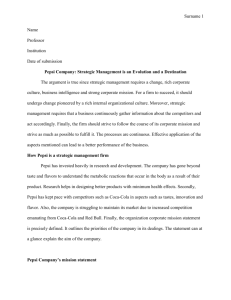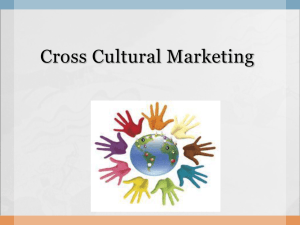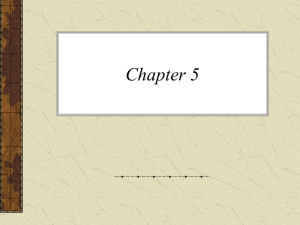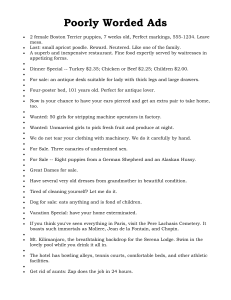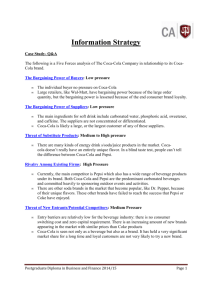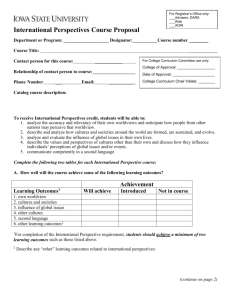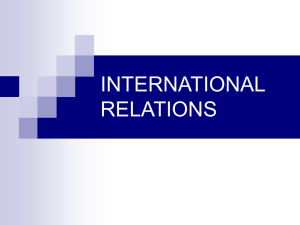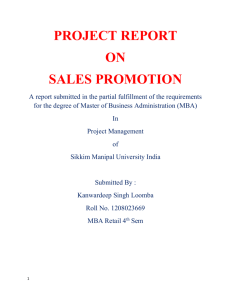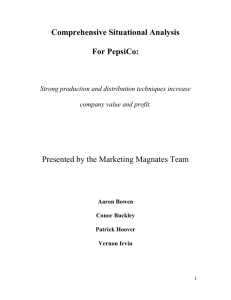adopt a worldview - Mrs. Nardelli's Honors English 10 Class Website
advertisement
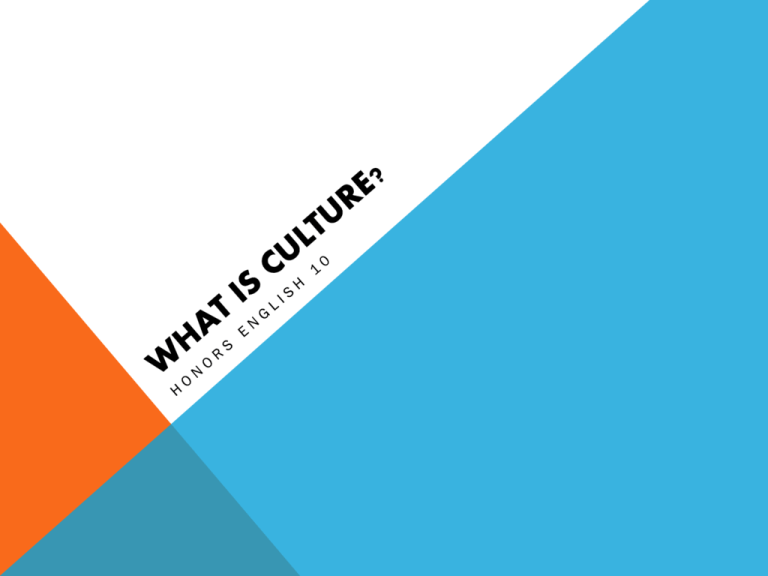
WHAT IS CULTURE TO YOU? CLICK HERE DEFINE CULTURE Culture refers to the total lifestyle of a people, including all of their ideas, values, knowledge, behaviors, and material objects that they share. Culture shapes and guides people’s perception of reality. CULTURE DETERMINES……. • Food we eat • Government/Laws • Language • Shelter • Clothing • • • Recreation/Entertainment How to express emotions What is good or bad • Economy • Religion • Education • Values • Climate • What is high or low culture (if any) DID YOU HIT THE NAIL ON THE HEAD? Share your pictures and stories with the class . Now, let’s see if you were even close! https://www.youtube.com/watch?v=3my3EOqEvWU CULTURE SHOCK El Salvador Fireball Festival Running of the Bulls in Pamplona, Spain #1 Running of the Bulls in Pamplona, Spain #2 25 Most Insane Festivals World’s Weirdest Festivals Top Ten Festivals Tomatino #1 Tomatino #2 Holi in India #1 Reactions… CULTURE SHOCK… IN PRINT In pairs, read your article and record the following into your notes: Headline: Country: Shocking Facts: AMERICA So, what does your country mean to you? AMERICA IS… Write several descriptive phrases that capture classic images or icons of America. Please begin your phrase with “America Is.” Examples: America is a hot dog with mustard and chili at a baseball game in summer. America is guys and girls wandering aimlessly at a crowded mall. the flip side . . . What is the “culture gap”? “You think your pain and your heartbreak are unprecedented in the history of the world, but then you read. It was books that taught me that the things that tormented me most were the very things that connected me with all the people who were alive, or who had ever been alive.” -James Baldwin THE CULTURE GAP A culture gap is any systematic difference between two cultures which hinders mutual understanding or relations. Such differences include the values, behavior, education, and customs of the respective cultures. Culture gaps can relate to religion, ethnicity, age, or social class. What happens if you are unaware of the customs and values of another culture? MILK IN MEXICO Dairy Association’s huge success with the campaign “Got Milk?” prompted them to expand advertising to Mexico. It was brought to their attention the Spanish translation read, “Are you lactating?” CLAIROL IN GERMANY Clairol introduced the “Mist Stick”, a curling iron into Germany, only to find out that “mist” is German slang for manure. GERBER IN AFRICA When Gerber started selling baby food in Africa, they used US packaging with the smiling baby on the label. In Africa, companies routinely put pictures on labels of what’s inside, since many people can’t read. PEPSI IN CHINA Pepsi’s “Come Alive With the Pepsi Generation” in Chinese translated into “Pepsi Brings Your Ancestors Back From the Grave”. COCA-COLA IN CHINA Coca-Cola’s name in China was first read as “Kekoukela”, meaning “Bite the wax tadpole” or “female horse stuffed with wax”, depending on the dialect. Coke then researched 40,000 characters to find a phonetic equivalent “kokou kole”, translating into “happiness in the mouth.” ADOPT A WORLDVIEW Which method of transportation would you choose? Which one is best? Which one is worst? ADOPT A WORLDVIEW PAROCHIALISM- my way is the only way ; Narrow-minded ETHNOCENTRISM- my way is the best way the belief in the inherent superiority of one's own ethnic group or culture MULTICULTURALISM- all ways are acceptable ADOPT A WORLDVIEW Parochialism? Ethnocentrism? Multiculturalism? HOW DO YOU SEE IT? View>> “Free People” Reflect on the following : • What are the possible drawbacks to a parochial or ethnocentric perspective? • • What are the advantages to a multicultural perspective? Consider why there is not a more multicultural view of the world. • What can we learn by reading literature from other cultures? • What benefits are there to reading literature from other cultures? • How might reading world literature challenge or alter our perceptions? Write at least a page reflecting on today’s activities. Finish this for homework as needed. BRIDGING THE CULTURE GAP “Appreciation of our differences starts with the acknowledgment of our similarities.” -Peter Reese
